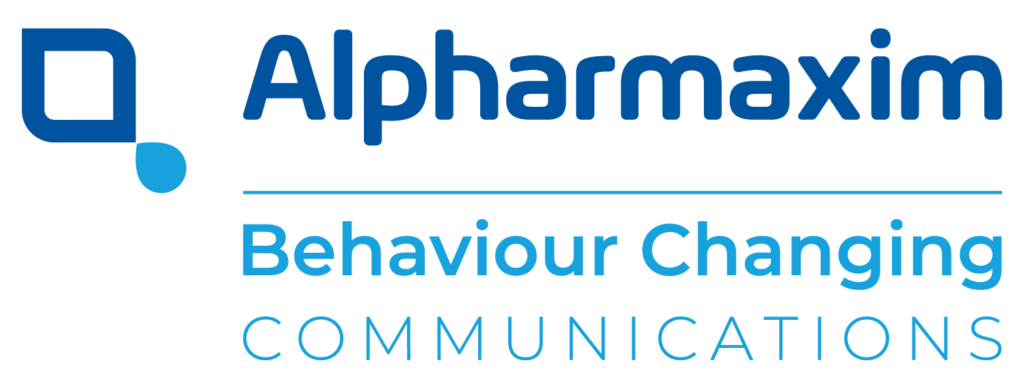Written by: Sophie Jones
Sophie is Director of Strategic Development at Alpharmaxim Healthcare Communications
COVID-19 has affected people all around the world, impacting lives everywhere in ways we could not have predicted. Each of us has experienced life‑changing consequences as a result of the pandemic, both personally and professionally.
Virtual communication has become the norm, whether you are speaking to your family and friends, or your business colleagues and customers. The business world has certainly embraced these changes, and 6 months in, technology has become the saviour of maintaining and growing business relationships, particularly in the short-term.
Whilst our relationships with family and friends will, at some point, return to normal, what will the lasting repercussions be for the healthcare industry?
- What does the future look like?
- How long will this go on?
- Will we ever go back to the way things were before?
Technology
Technology has allowed us to rise to the challenges presented by the pandemic, enabling life to continue – albeit very differently. Online health consultations, wearable tech, digital conference and meeting platforms, and virtual education have all become the standard in our new world.
As digital technology grows with the current and ongoing need, we must look to the future.
Imagine it’s 2025, 5 years on from the mass panic caused by COVID-19 back in March 2020 – where will your communications be? Are you re‑thinking your strategy? Are you reshaping the way you communicate? Building a long-term and ongoing virtual engagement and communications strategy will help you to continue to grow, raise the profile of your company and brands, and increase disease awareness and education.
A strong strategy in the healthcare arena will need to include the future-proofing of materials and activities, maximising opportunities presented by digital engagement platforms to develop, evolve and extend relationships with key audiences.
How much more productive can you and your teams be by fully integrating ongoing digital and virtual engagement into your strategy? You could save time and money, and become more efficient.
Ensure you communicate with a voice that is tailored to each of your audiences – talk to them in their own language, reach them in their preferred online environment and focus your content and story on their needs and interests.
Planning to continue with virtual communication in an integrated, considered and intelligent way – using strong, compelling content to capture and keep your audiences’ attention – will not only provide a wider platform for engagement, but also an increased return on investment, as your content is more accessible. Remember that you can also gain significantly increased metrics and insights from online engagement, which could help you evolve your strategy to keep pace with an ever‑changing environment.
Applications and wearable tech
In the UK, the NHS COVID-19 contact tracing app was launched in September to track COVID 19 cases, drive public awareness of the risks in local areas and alert users who may have had contact with anyone with the virus. In its first month, 10 million people downloaded the app, with 6 million downloads on the first day of the app’s launch.1
The public are embracing increased ownership and responsibility for their health and wellbeing, a trend the pharmaceutical industry should pay attention to.
Public expectation
Somewhat unsurprisingly, COVID-19 has driven a significant increase in the awareness and interest of the wider healthcare environment among the public. People are actively monitoring the news around COVID-19, researching new vaccines, and even sharing long and passionate posts and articles online. With our industry under more public scrutiny than ever before, we must be aware that this trend may well continue.
Will our studies and clinical trials focus more on patient-reported outcomes? Should our publications be fast-tracked? Should we be proactively focusing on the public as another key audience?
Transparency and public perception are key. This will not change – so we need to.
Ultimately…
Life is unlikely to ever go back to exactly how it was before COVID-19.
Medical congresses and meetings will likely become a mix of virtual and face-to-face events. Patients will continue to move to virtual channels, such as telemedicine, virtual GP appointments and e-prescriptions, for their healthcare needs.
Our content must be designed in a way that speaks to a geographically diverse audience, capturing their attention and getting the message across clearly and quickly.
We must make use of the digital opportunities available to us, increase the quality and frequency of our engagement, drive stronger relationships and access virtual audiences.
- Imagine if we lived in a pre-technology world?
- Can you even conceptualise how differently things would have panned out?
References
1. Department of Health & Social Care. NHS COVID-19 app has been downloaded over 10 million times [press release]. 27 September 2020. https://www.gov.uk/government/news/nhs-covid-19-app-has-been-downloaded-over-10-million-times. Accessed 6 October 2020


